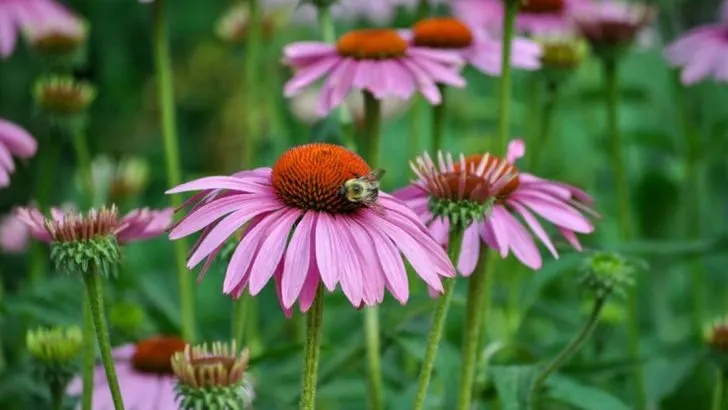Stop watching your garden shrivel in the July swamp! Your perennials deserve more than a slow fade into brown. They need the kind of toughness that laughs at steamy afternoons and sticky nights. Think glossy leaves that hold tight, blooms that crack a grin at humidity, roots that never wilt. Forget those prima donna plants that melt under the first heatwave. We’ve got 14 green warriors built for the long haul. They shrug off muggy air and keep your borders alive, color dancing through August and beyond. But beware the six divas that’ll fold faster than an umbrella in a gale. No more praying your favorites survive. Pick the players that play rough, and watch your summer garden stand tall while the rest melt away. Ready to trade wilt for wow? Let’s dive into the ultimate summer survivor list.
Daylily
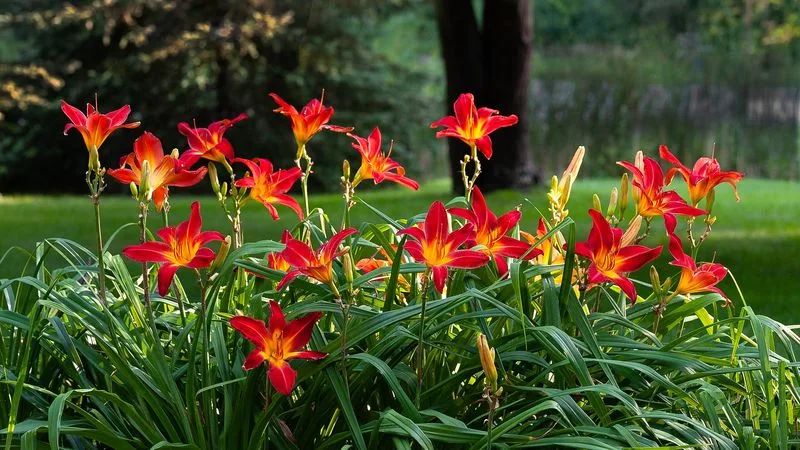
Daylilies greet the summer with a vibrant display, their trumpet-shaped blooms swaying gently in the breeze. Known for their hardiness, they thrive in a variety of conditions, making them a gardener’s favorite.
These perennials are not just visually appealing but also easy to maintain. They require minimal care, yet reward you with continuous blooms.
A fascinating fact: Daylilies are edible, adding a unique twist to salads or stir-fries. Enjoy their beauty in the garden or on your plate.
Hosta
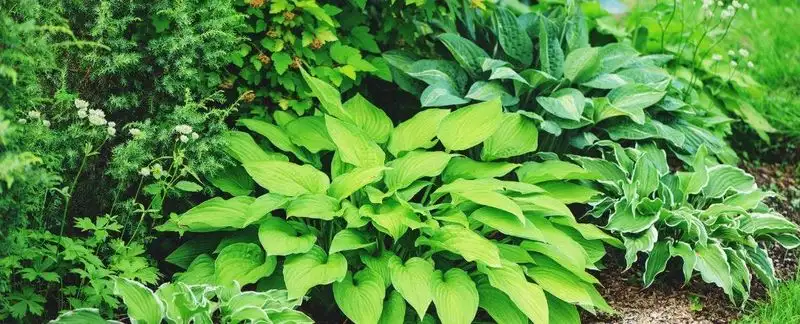
Hostas, with their lush, broad leaves, bring elegance to any shaded garden corner. They thrive away from direct sunlight, providing a cool respite in the warmth.
Their color variations, from deep greens to striking variegations, offer rich visual interest. Despite the heat, hostas remain robust, maintaining their lush appearance.
Did you know? Hostas are native to Northeast Asia and have been cultivated for centuries. Their ability to adapt makes them a staple in many gardens worldwide.
Coneflower
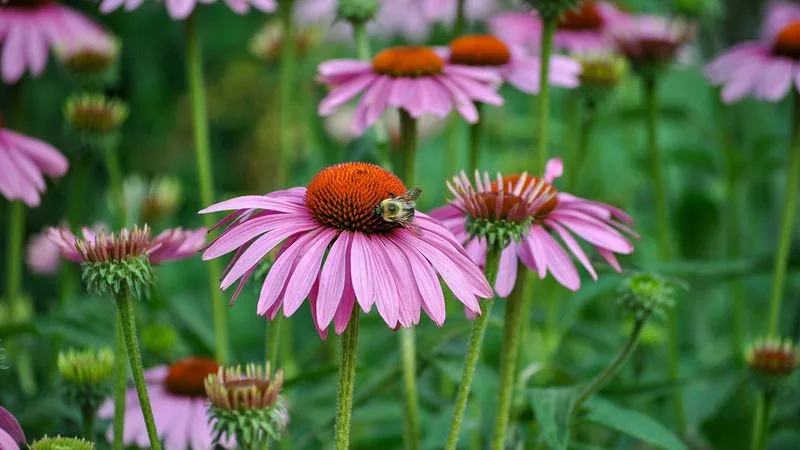
Coneflowers, with their vibrant purple petals, are a beacon for bees and butterflies. Standing tall, they bring life to summer gardens, thriving under the sun’s warmth.
These resilient perennials are drought-tolerant, making them perfect for low-maintenance landscapes. Their long blooming period ensures a colorful display throughout the hot months.
A fun tidbit: Coneflowers have been used in herbal remedies, believed to support the immune system. Their dual purpose of beauty and health is truly remarkable.
Black-eyed Susan
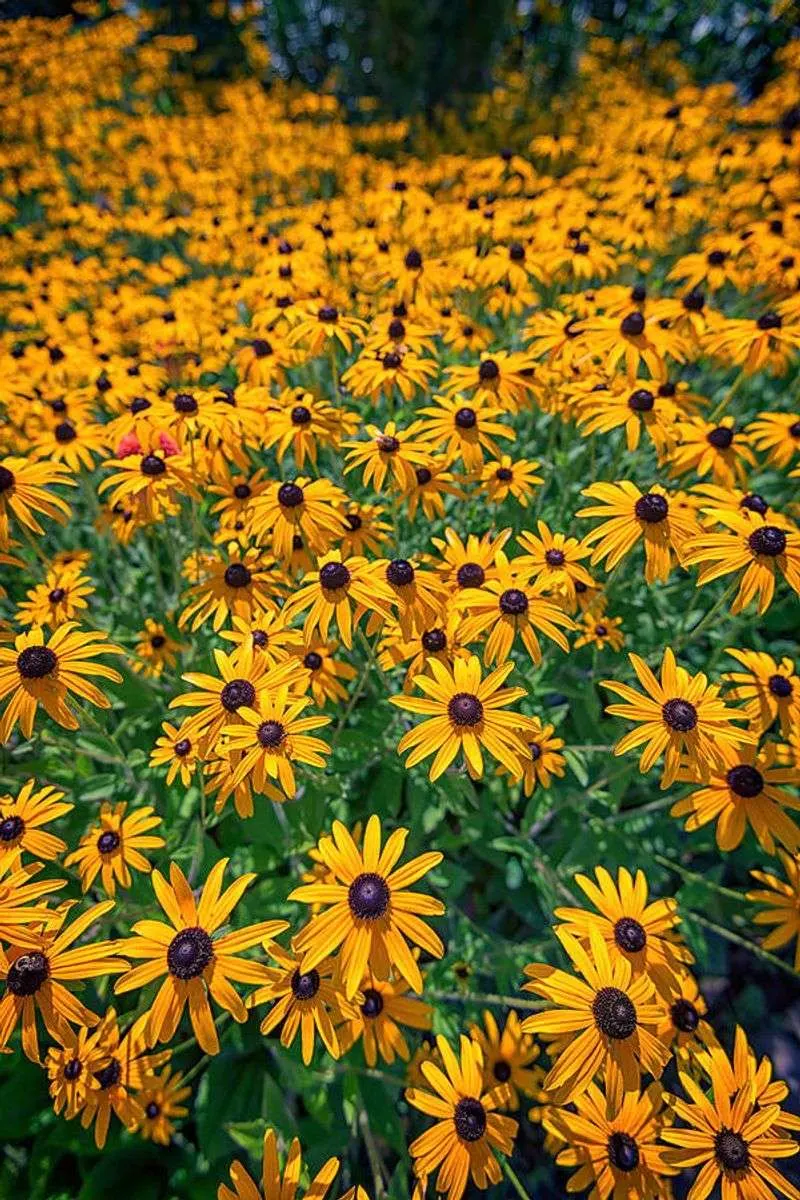
Black-eyed Susans are the cheerful faces of the garden, with their sunny yellow blooms and contrasting dark centers. They thrive in full sun, bringing warmth to any landscape.
These hardy perennials bloom from midsummer to fall, enduring the hottest days with ease. Their robust nature makes them a trustworthy choice for gardeners.
Historically, these flowers were used by Native Americans for medicinal purposes. Their deep-rooted history adds a layer of intrigue to their cheerful disposition.
Sedum
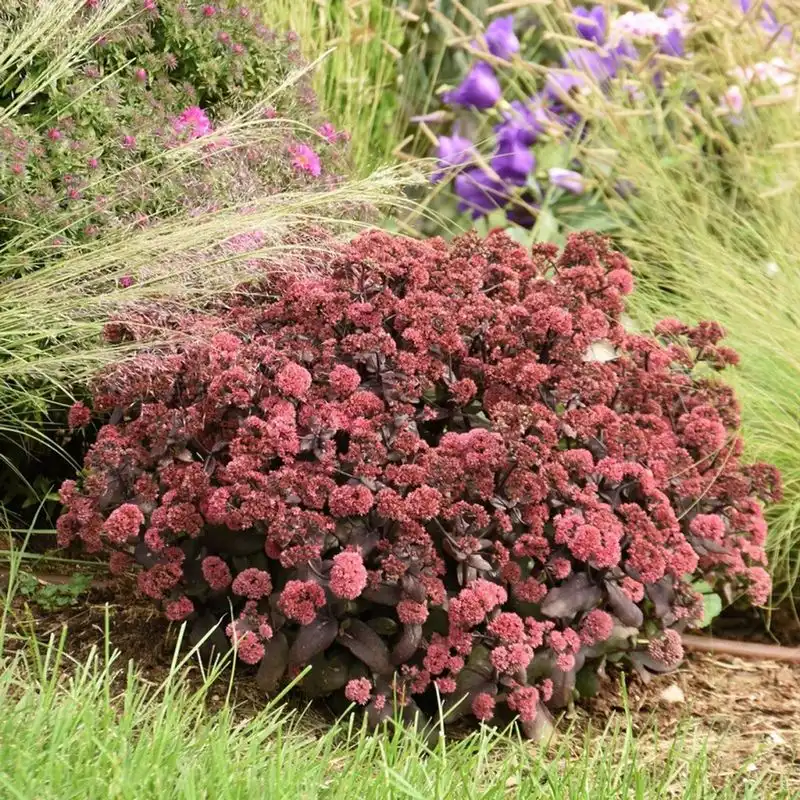
Sedum, with their fleshy, succulent leaves, are champions of dry, arid conditions. They flourish where other plants might wilt, adding texture to gardens.
Their star-shaped flowers come in shades of pink and yellow, creating a soft contrast against the greenery. Sedums are low-maintenance, requiring little water.
Did you know? Sedum is also known as stonecrop, due to its ability to thrive in rocky environments. This adaptability makes it a favorite among gardeners seeking resilient beauty.
Russian Sage
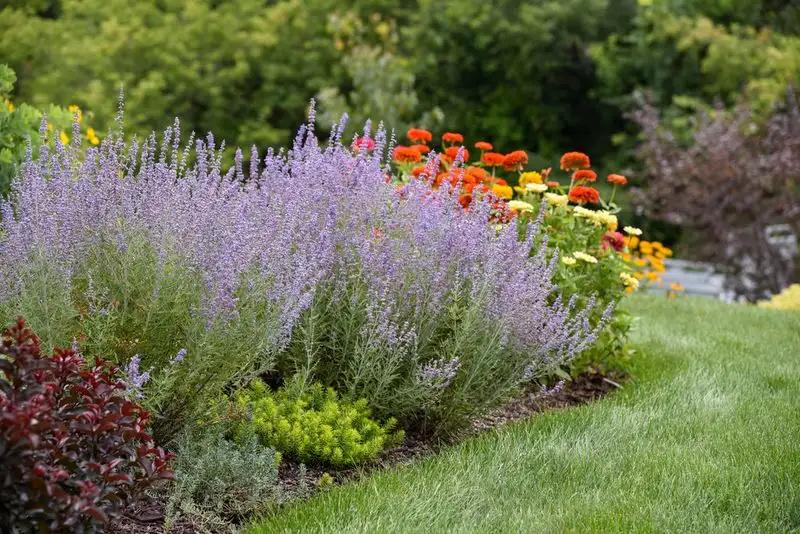
Russian sage is a drought-tolerant marvel, with silvery foliage and spires of purple-blue flowers. It thrives in full sun, adding a touch of elegance to summer gardens.
The aroma of sage fills the air, offering a sensory delight alongside its visual appeal. Its long blooming period provides continuous color.
Interesting fact: Despite its name, Russian sage is native to Central Asia. Its hardy nature makes it a staple in xeriscaping, where water conservation is crucial.
Lantana
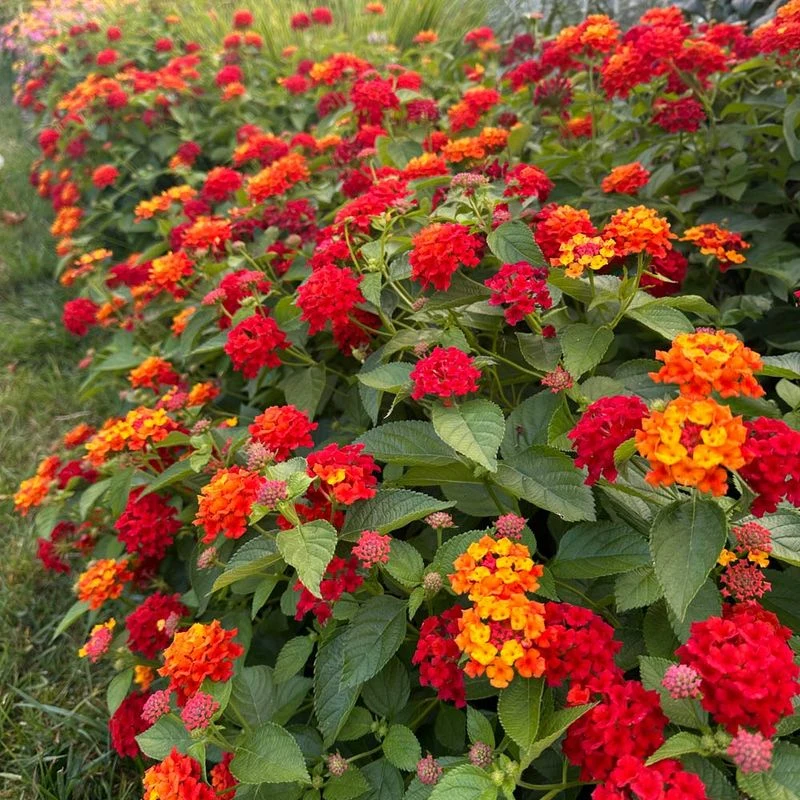
Lantana bursts into color with clusters of bright blooms, attracting hummingbirds to its nectar-rich flowers. It’s perfect for hot, sunny locations, thriving despite the heat.
This perennial’s ability to bloom throughout the season makes it a garden standout. Its resilience in challenging conditions is remarkable.
Did you know? Lantana is often used in butterfly gardens due to its allure for pollinators. Its vibrant colors and hardy nature ensure it remains a garden favorite.
Bee Balm
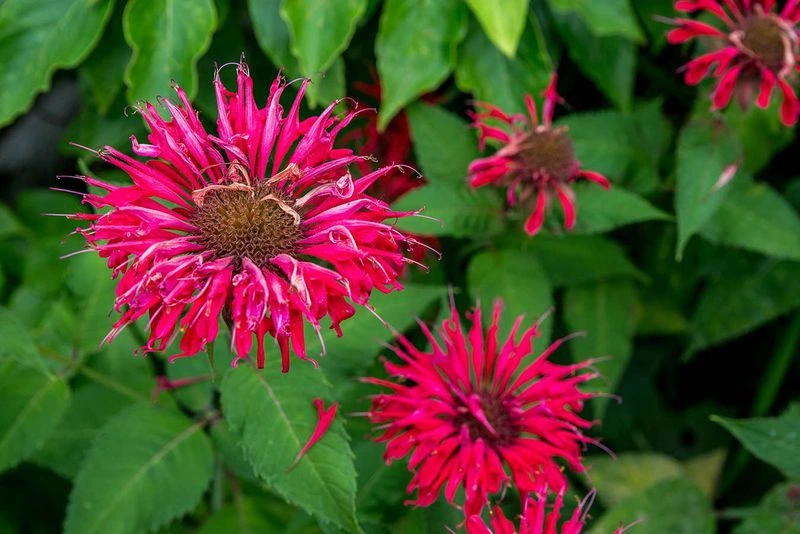
Bee balm, with its striking red blooms, is a magnet for pollinators, making gardens buzz with life. It thrives in sunny locations, adding vibrant color to summer landscapes.
This perennial is not only beautiful but also useful in herbal teas, offering a citrusy flavor. Its hardiness ensures it withstands warm climates.
Fun fact: Bee balm belongs to the mint family and has been used by Native Americans for its medicinal properties. Its legacy continues in modern gardens.
Yarrow
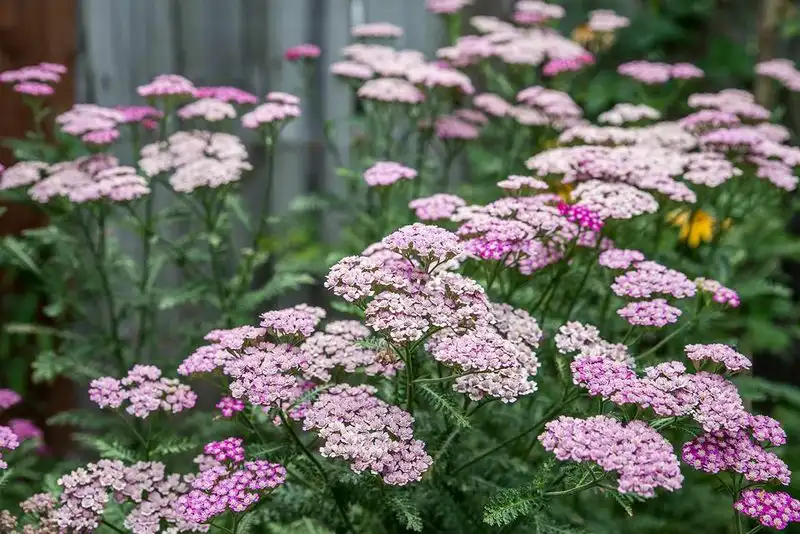
Yarrow stands resilient in the heat, with its clusters of flat-topped flowers in hues of yellow, pink, and white. This perennial thrives in full sun, adding texture to garden borders.
Its fern-like leaves are aromatic, adding another layer of sensory delight. Yarrow’s drought tolerance makes it a reliable choice.
A historical nugget: Yarrow has been used for centuries for medicinal purposes, known for its healing properties. Its combination of beauty and utility is captivating.
Gaillardia
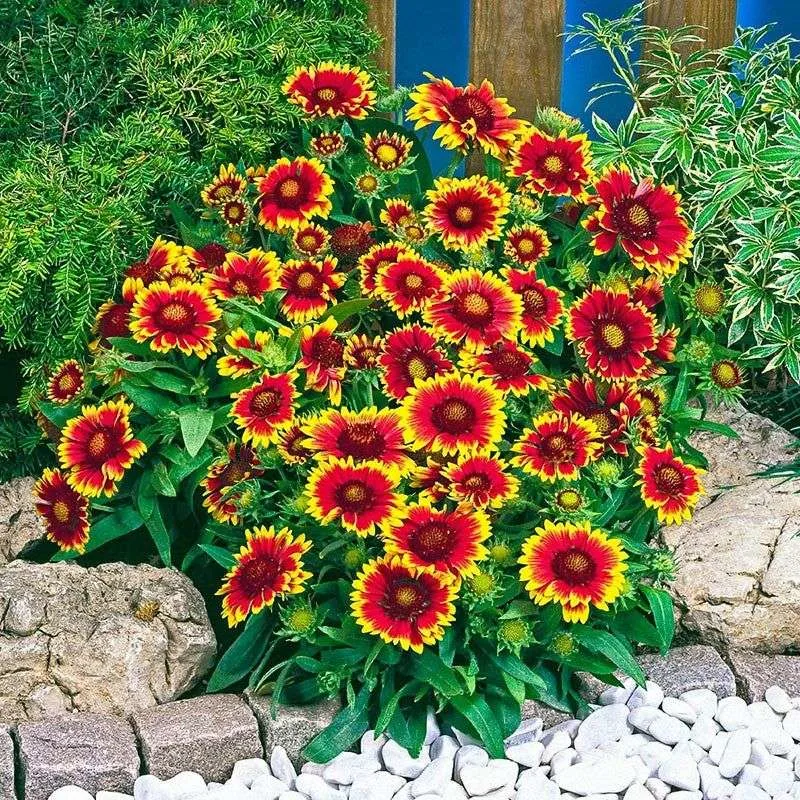
Gaillardia, or blanket flowers, explode with fiery red and yellow blooms, creating a vibrant tapestry in the garden. They thrive in sunny, dry conditions, ideal for hot summers.
These perennials are low-maintenance, requiring little attention while offering continuous color. Their long blooming season is a gardener’s delight.
An interesting detail: Gaillardia is named after an 18th-century French botanist. Its historical ties enhance its appeal, making it a cherished addition to any garden.
Ornamental Grass
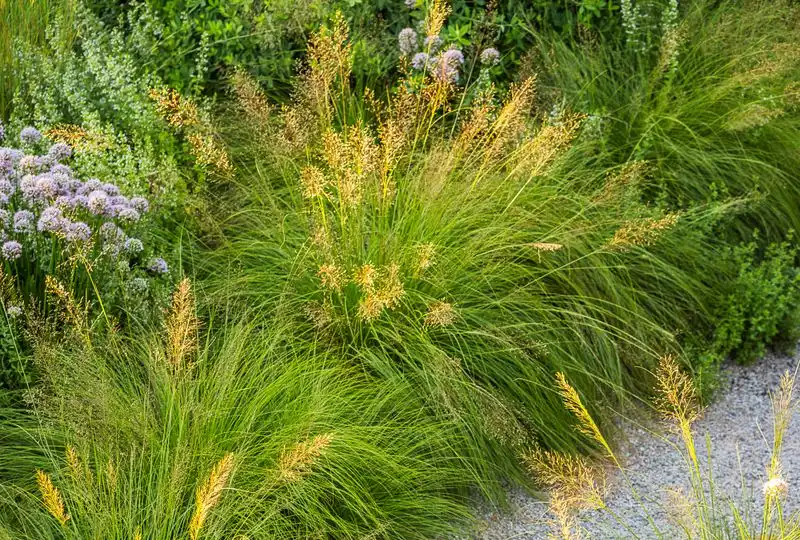
Ornamental grasses bring movement and texture to gardens, thriving in hot, sunny conditions where others might falter. Their graceful plumes add dynamic interest.
These grasses are easy to care for, often requiring minimal watering. They offer year-round interest, from lush summer growth to winter silhouettes.
Did you know? Many ornamental grasses are native to North American prairies, adapted to withstand harsh climates. Their resilience and aesthetic appeal make them a valuable addition to gardens.
Zinnia
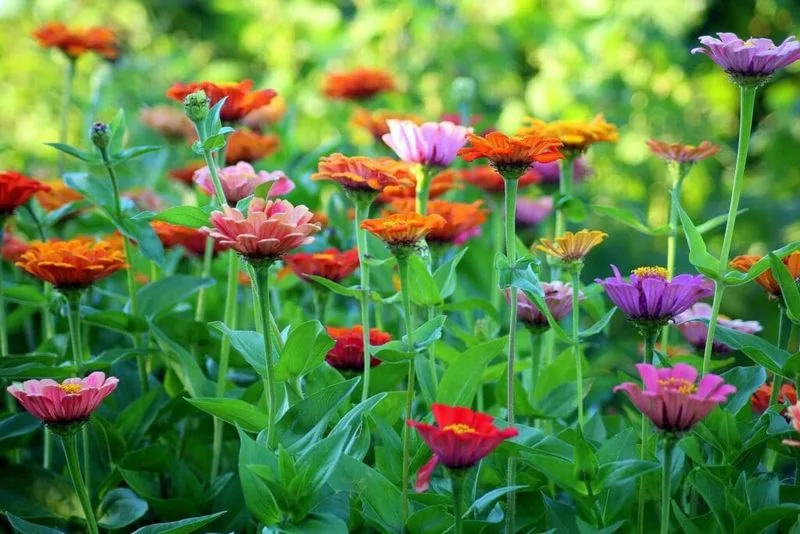
Zinnias splash gardens with vibrant colors, their bold blooms thriving in sunny, warm conditions. These perennials are a favorite for adding cheerful hues.
They are easy to grow, with a robust nature that withstands the summer heat. Their long blooming season ensures continuous color.
A fun fact: Zinnias were named after Johann Gottfried Zinn, an 18th-century botanist. Their history is as colorful as their blooms, making them a delightful garden choice.
Coreopsis
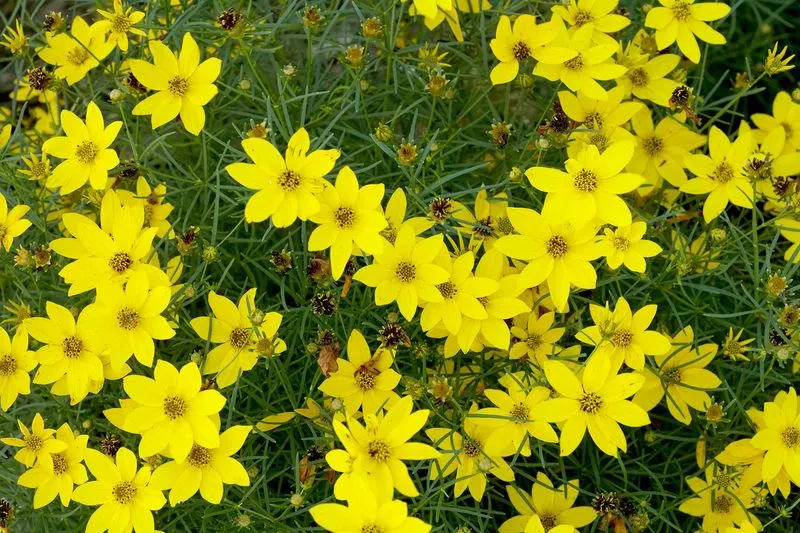
Coreopsis, with its sunny yellow blooms, is a bright spot in any garden. These perennials are heat-tolerant, effortlessly weathering hot summers.
Their daisy-like flowers attract pollinators, adding life to any landscape. The ease of growth makes them a gardener’s favorite.
Did you know? Coreopsis is the state wildflower of Florida, celebrated for its beauty and resilience. Its charm and toughness are a winning combination in gardens everywhere.
Lavender
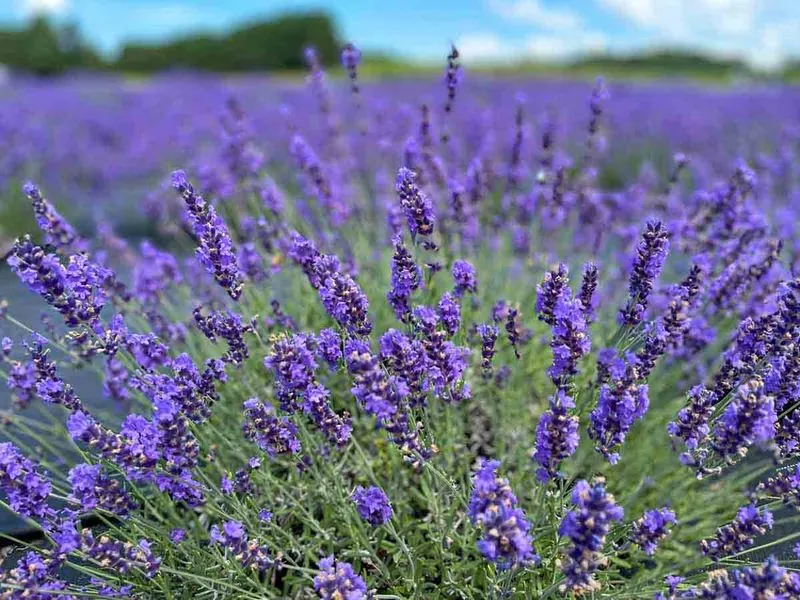
Lavender, with its iconic purple spikes, fills gardens with both beauty and fragrance. Thriving in full sun, it’s perfect for dry, hot conditions.
This perennial is versatile, used in sachets, oils, and culinary dishes. Its resilience and aroma make it a cherished garden staple.
A historical note: Lavender has been prized since ancient times for its calming properties. Its enduring popularity is a testament to its beauty and utility.
Astilbe
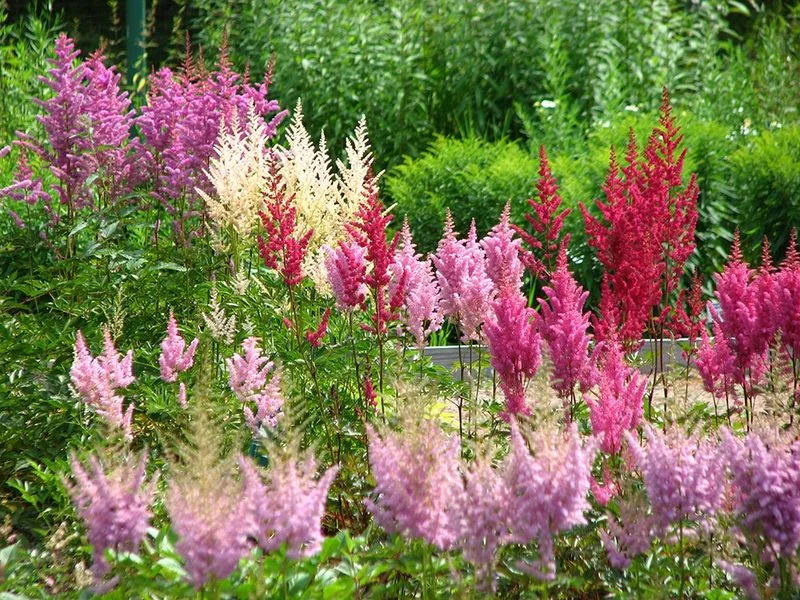
Astilbes add a soft, feathery texture to gardens with their plume-like flowers. They thrive in shaded, moist areas, perfect for offsetting the intense summer heat.
Their color ranges from soft pinks to deep reds, offering elegant beauty. Despite their delicate appearance, they are robust and easy to grow.
An interesting fact: Astilbes are native to Asia and North America, adapted to a variety of climates. Their graceful blooms are a testament to their versatility.
Lupine
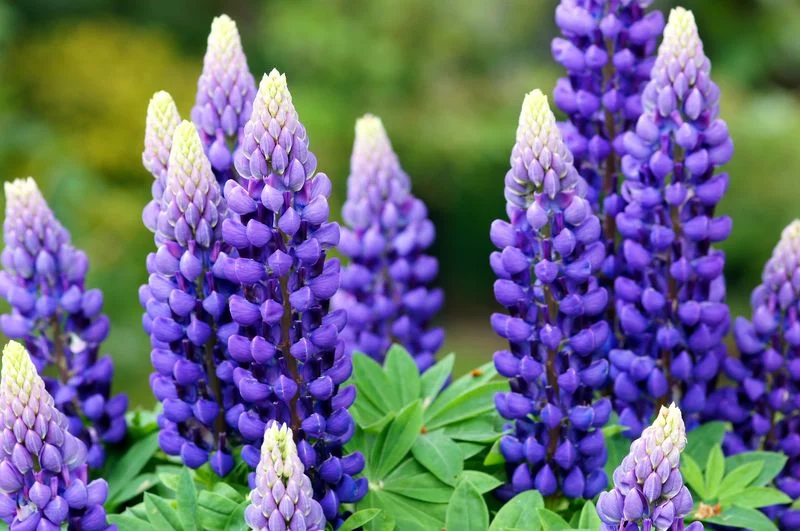
Lupines, with their lofty spires of blue and purple, create striking vertical interest in the garden. They thrive in cooler summer climates, adding architectural beauty.
These perennials are nitrogen-fixing, enriching the soil naturally. Their beauty and ecological benefits are a gardener’s dream.
Did you know? Lupines were cultivated by ancient civilizations for their seeds. Their historical significance enhances their modern allure, making them a timeless choice.
Hellebore

Hellebores bloom when most others are dormant, bringing life to early spring gardens. Their nodding flowers in shades of pink and white defy the chill.
These perennials prefer shaded, cool environments, making them ideal for temperate climates. Their longevity is a testament to their resilience.
Did you know? Hellebores have a storied past, used in ancient times for their purported magical properties. Their mystique and beauty endure in gardens today.
Delphinium
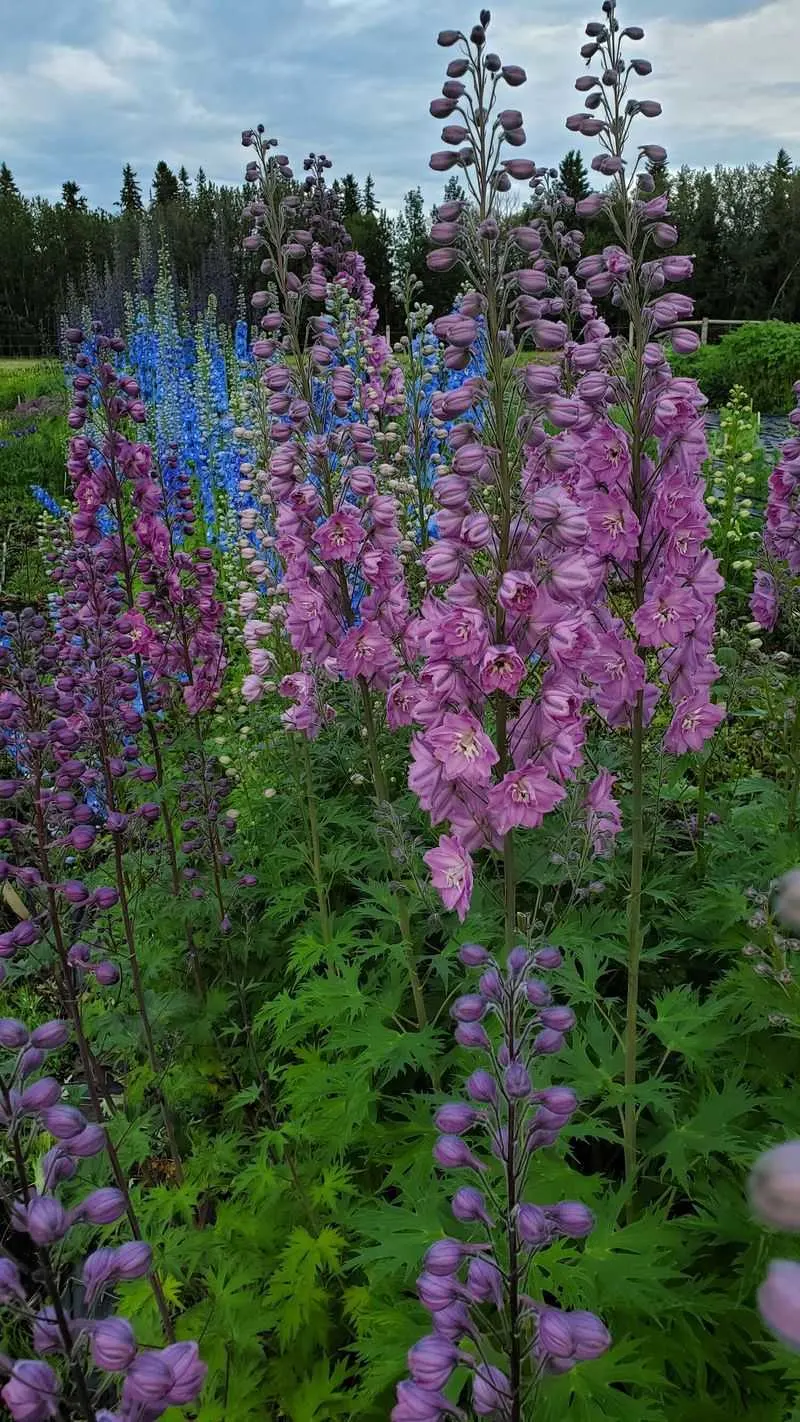
Delphiniums, with their towering spikes of blue flowers, are the aristocrats of the garden. They prefer cooler climates, adding grace to any landscape.
Their striking blooms attract pollinators, supporting garden biodiversity. Delphiniums offer both beauty and environmental benefits.
A fun tidbit: Delphiniums are named after the dolphin-shaped buds. Their unique form and vibrant colors make them a beloved classic in gardens worldwide.
Peony

Peonies, with their lush, full blooms, bring romance to gardens. They thrive in temperate climates, providing springtime elegance.
These perennials are known for their longevity, often passed down through generations. Their fragrant blooms are a delight to the senses.
Did you know? Peonies have been cultivated for over 2,000 years, originally prized in Chinese gardens. Their rich history adds depth to their stunning beauty.
Hydrangea
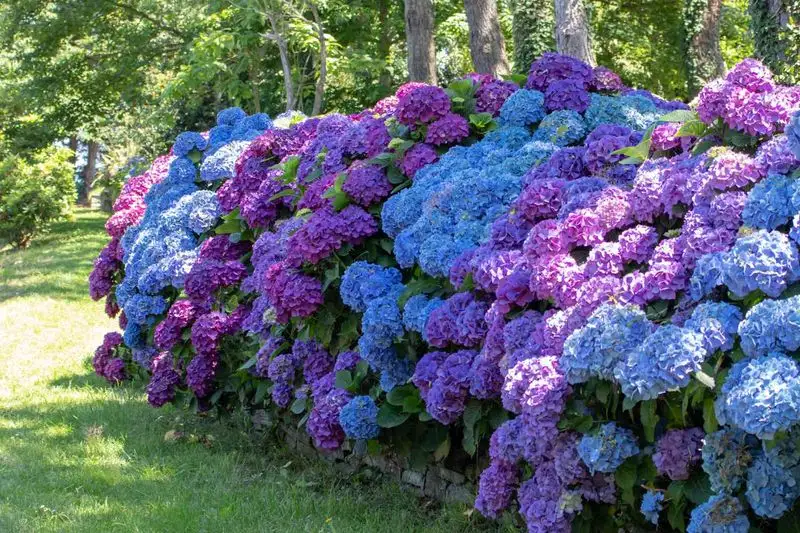
Hydrangeas burst into gardens with their large, showy blooms in shades of pink, blue, and white. They prefer cooler, shaded areas, thriving in mild climates.
These perennials are a favorite for their dramatic floral displays and versatility. Prized for cut flowers, they grace home decor with ease.
An intriguing detail: The color of hydrangeas can change based on soil pH. This adaptability, coupled with their beauty, makes them a fascinating garden choice.

